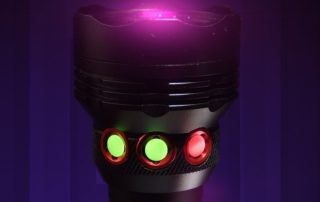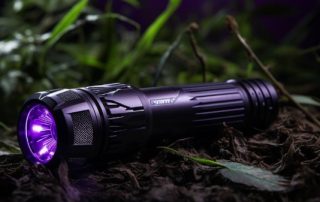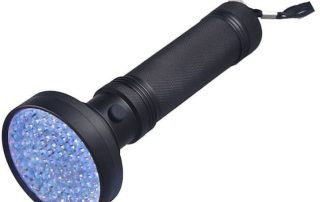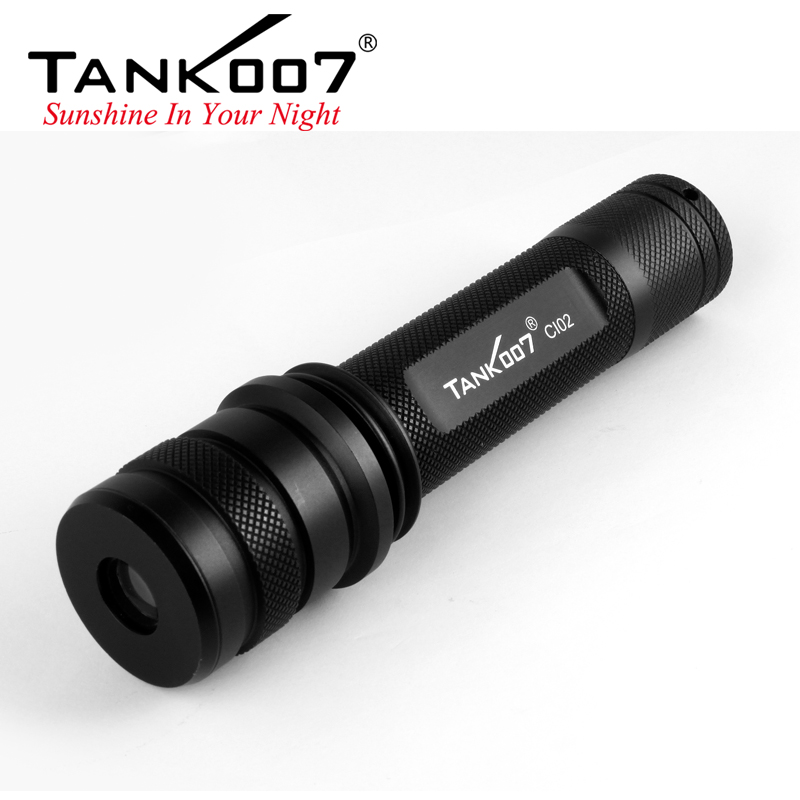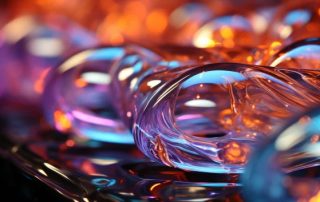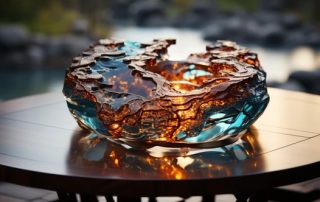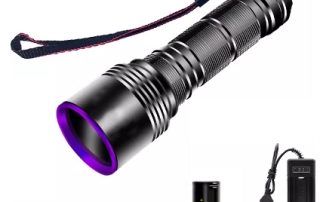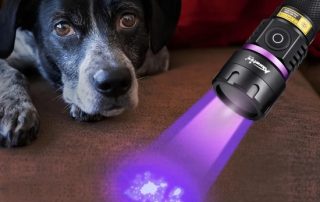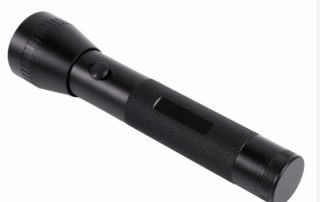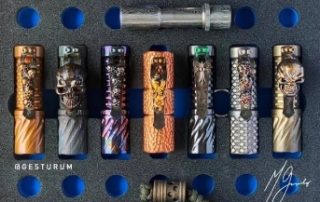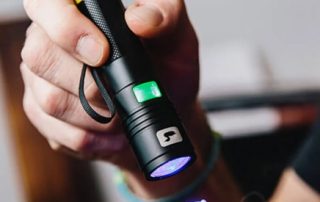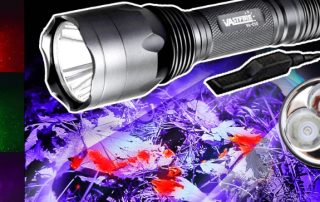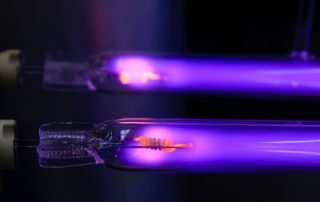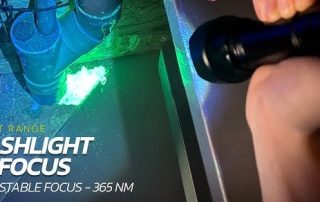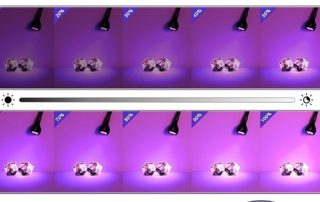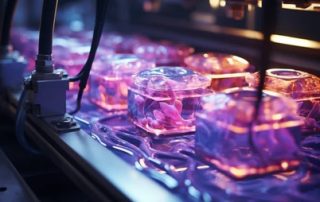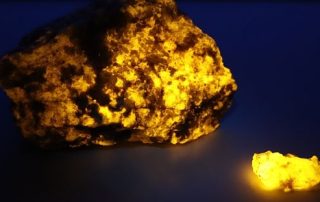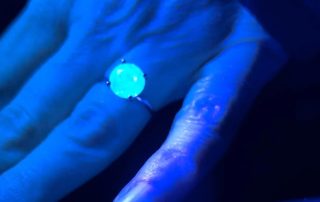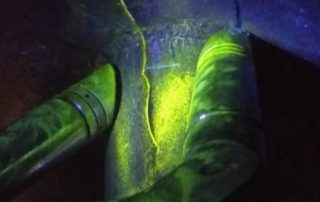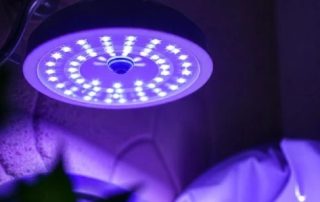Top 5 UV Flashlights for Minerals Detection in 2025
Mineral detection is an exciting field where UV flashlights play a critical role. A high-quality UV flashlight reveals the fluorescence of minerals, enhancing your ability to identify and collect specimens. This article highlights the top five UV flashlights of 2025, comparing their key features and suitability for various needs. Among them, we’ll introduce the Tank007 K9A5, a cutting-edge model that stands out for its efficiency and portability. What to Look for in a UV Flashlight for Minerals Detection Before diving into the list, here are the key features to consider when choosing a UV flashlight: Wavelength: 365nm is the ideal [...]
How to Choose the Best UV Flashlight for Minerals
UV flashlights are invaluable tools for mineral hunting, allowing users to identify fluorescent minerals by their glowing colors under UV light. Choosing the right UV flashlight can greatly enhance your experience. This guide will cover the key factors to consider, including wavelength, brightness, material, and battery type, to help you make the best decision. Key Factors to Consider 1. Wavelength The wavelength of the UV light is the most critical factor for minerals detection. Wavelength Applications Advantages Disadvantages 365nm Best for mineral hunting, professional use Clear fluorescence with minimal visible light interference Higher cost 395nm Suitable for casual users and [...]
Choose the Best UV Torch for All Your Professional and Personal Needs
When it comes to finding a reliable UV torch, it's essential to choose a product that combines quality, performance, and versatility.
Illuminate Your Path with Tank007 LED Flashlight Wholesale
Tank007 offers a wide range of high-quality LED flashlights tailored to meet various lighting needs. From wholesale rechargeable LED flashlights to ultraviolet (UV) torches, Tank007 provides reliable illumination solutions for professionals and enthusiasts alike. Let's explore the features and benefits of Tank007 LED flashlights: Tank007 is renowned for its best-in-class rechargeable LED Flashlight Wholesale?available at wholesale prices. Whether you're a retailer, distributor, or organization looking to equip your team with dependable lighting tools, Tank007 offers competitive wholesale rates without compromising on quality. Key Features of Tank007 LED Flashlights: Superior Brightness: Tank007 LED flashlights deliver powerful illumination, ensuring visibility in low-light [...]
Guide to Police Flashlight: Reliable, Bright, and Durable
Have you ever wondered how police officers can maintain control in dark or low-light environments? A critical tool they rely on is the police flashlight. These specially designed flashlights offer more than just light—they’re reliable, durable, and often multifunctional. Whether you're a law enforcement professional or someone seeking a dependable flashlight for your personal needs, understanding the importance of a good police flashlight can make all the difference. In this blog post, we will explore the features, benefits, and reasons why a police flashlight is an essential tool for various situations. Let's dive in! Why Choose a Police Flashlight? Police [...]
FAQs About UV Flashlight for Resin Curing
UV flashlights are a critical tool for resin curing, offering speed and precision in crafting projects. This article addresses frequently asked questions to help you understand their functionality, features, and best practices for resin curing. What Is a UV Flashlight, and How Does It Work? A UV flashlight emits ultraviolet (UV) light, typically at wavelengths of 365nm or 395nm, which triggers a photochemical reaction in UV-sensitive resin, hardening it. This process is widely used in crafts, repairs, and small-scale projects due to its precision and convenience. Why Is Wavelength Important in Resin Curing? Wavelength Features Best Use Cases 365nm Emits [...]
Top Applications of UV Flashlights in Resin Art and Crafting
UV flashlights are an indispensable tool in resin art and crafting. They offer precision, control, and efficiency, making them ideal for curing resin and exploring creative applications. This guide explores the top uses of UV flashlights in resin art, factors to consider when choosing one, and tips for effective use. How UV Flashlights Work in Resin Art UV flashlights emit ultraviolet light, typically at wavelengths of 365nm or 395nm, to cure UV-sensitive resin. This process triggers a chemical reaction that solidifies the resin, providing strong, durable, and transparent results. Top Applications of UV Flashlights in Resin Art Application How It [...]
How to Find the Best 365nm UV Flashlight Near Me
When searching for the best 365nm UV flashlight, it’s important to consider its features, applications, and where to buy. This guide will walk you through the process of finding the right flashlight for your needs and provide a comparison of local vs. online options. Understanding 365nm UV Flashlights A 365nm UV flashlight emits ultraviolet light with a wavelength of 365 nanometers, which is perfect for: Fluorescence Detection: Minerals, gems, and antiques. Inspection Work: Detecting leaks, stains, or counterfeit items. Professional Applications: Non-destructive testing, forensic investigations, and medical uses. Key Features to Look for in a 365nm UV Flashlight Feature Why [...]
How to Choose the Best UV Blacklight Flashlight for Your Needs
UV blacklight flashlights are versatile tools used in various fields such as mineral hunting, forensic investigations, pet stain detection, and counterfeit verification. Choosing the best UV flashlight for your specific needs requires an understanding of its key features and their impact on performance. This guide will help you make an informed decision. Key Factors to Consider 1. Wavelength (nm) The wavelength of a UV flashlight determines its functionality. 365nm: Produces a purer UV light, less visible purple glow, ideal for precise applications like forensic investigations or mineral detection. 395nm: More affordable, emits a stronger visible purple glow, suitable for general [...]
Flashlight Manufacturer vs Supplier: Key Differences Explained
When sourcing flashlights for business or personal use, understanding the difference between manufacturers and suppliers is crucial. While these terms are often used interchangeably, they represent distinct roles in the supply chain. This article explains their differences, advantages, and how to decide which is best for your needs. Definition and Roles Aspect Flashlight Manufacturer Flashlight Supplier Definition A company that produces flashlights from raw materials and components. An entity that sells flashlights sourced from manufacturers. Role Designs, develops, and assembles products. Acts as an intermediary between manufacturers and buyers. Key Differences Criteria Manufacturer Supplier Control Over Quality High: Direct oversight [...]
Flashlight Supplier: How to Choose the Best Partner
A reliable flashlight supplier is essential for businesses and individuals who need high-quality, durable, and innovative lighting solutions. This guide explores the key factors to consider when selecting a flashlight supplier, outlines the benefits of working with a professional supplier, and provides actionable tips to ensure a successful partnership. Why Partner with a Flashlight Supplier? Working with a trusted flashlight supplier offers several advantages: Product Variety: Access to a wide range of flashlights, including tactical, UV, and industrial models. Customization Options: Many suppliers offer customization services, such as branding and feature modifications. Cost Efficiency: Bulk purchasing from suppliers often leads [...]
Custom Flashlight: Designing the Perfect Lighting Solution for Your Needs
Custom flashlights offer a versatile and personalized approach to portable lighting. Whether you are looking for promotional items, specialized equipment for specific industries, or a unique tool tailored to your lifestyle, custom flashlights can meet a variety of requirements. This guide explores the key aspects of custom flashlights, including their benefits, design options, applications, and how to choose the right manufacturer. Why Choose a Custom Flashlight? Custom flashlights provide several advantages over generic models, such as: Personalization: Tailor the flashlight to your needs with custom colors, logos, and designs. Enhanced Functionality: Add features like adjustable brightness, UV light, or waterproof [...]
UV Flashlight Near Me: A Comprehensive Guide to Finding the Best UV Flashlight
Whether you're looking to detect pet stains, authenticate documents, or explore fluorescent minerals, finding the right UV flashlight near you is essential. This guide provides practical tips on locating the perfect UV flashlight in your area, what to look for, and how to choose the best one for your needs. What is a UV Flashlight? A UV flashlight emits ultraviolet light in the UVA spectrum (320–400nm), allowing certain materials to fluoresce. Common wavelengths include 365nm and 395nm, each suited for specific applications. Wavelength Common Applications Advantages 365nm Professional tasks like forensics and curing. Clearer fluorescence, ideal for precision. 395nm General [...]
Blacklight Flashlight: The Ultimate Guide
Blacklight flashlights, commonly known as UV flashlights, emit ultraviolet light that causes certain materials to fluoresce, revealing hidden details not visible under normal light. They are versatile tools used in various industries, including forensics, pet care, mineralogy, and more. This guide explores what blacklight flashlights are, how they work, and their applications, helping you choose the right one for your needs. What is a Blacklight Flashlight? A blacklight flashlight emits UV light, typically in the UVA spectrum (320–400nm). This light interacts with fluorescent materials, causing them to glow. The most common wavelengths for blacklight flashlights are 365nm and 395nm. Aspect [...]
UV Flashlight Home Depot: Choosing the Right One for Your Needs
UV flashlights are versatile tools used across various applications, from detecting stains to curing adhesives. If you’re considering purchasing one from a retailer like Home Depot, this guide will help you make an informed decision. We’ll cover the types of UV flashlights available, their key features, and tips for selecting the best one for your specific use. Understanding UV Flashlights UV flashlights emit ultraviolet light, typically in wavelengths ranging from 365nm to 395nm. These wavelengths are invisible to the human eye but interact with materials to produce fluorescence, making them useful in diverse settings. Application Recommended Wavelength Examples Detecting Pet [...]
UV LED Light Technology: How It Works and Its Benefits
UV LED (Ultraviolet Light Emitting Diode) technology is a groundbreaking advancement in lighting, offering superior efficiency, precision, and versatility compared to traditional UV lamps. This comprehensive guide explores how UV LED lights work and their myriad benefits across various applications. How UV LED Light Technology Works UV LED Light Technology UV LED lights operate by converting electrical energy into ultraviolet light through a semiconductor diode. Unlike traditional UV lamps, which rely on gas discharge, UV LEDs use solid-state components. Here’s a breakdown of their working mechanism: Semiconductor Diode: The core of a UV LED is a diode made [...]
UV Lamp vs. UV Flashlight: Which Is Better for Different Applications?
UV light technology has gained significant popularity across various fields, from disinfection and mineral detection to leak detection and resin curing. While UV lamps and UV flashlights both emit ultraviolet light, they serve different purposes depending on the application. This article explores their differences, advantages, and ideal usage scenarios to help you decide which tool suits your needs. Understanding UV Lamps and UV Flashlights UV Lamps UV lamps are stationary or semi-stationary devices designed for large-scale or specialized use. They emit UV light in a broader range and often come with higher power output, making them ideal for industrial and [...]
UV Lamp in Disinfection: A Comprehensive Guide
UV lamp have become a critical tool in disinfection processes across various industries, offering a chemical-free and efficient method to eliminate pathogens. This guide provides an in-depth look at the role of UV lamps in disinfection, their types, applications, and essential considerations. What Are UV Lamps for Disinfection? UV lamp emit ultraviolet light, which disrupts the DNA or RNA of microorganisms, rendering them inactive. UV-C light, in the wavelength range of 200–280 nm, is particularly effective for disinfection. How Do UV Lamps Work in Disinfection? UV-C Light Interaction: UV-C light penetrates microbial cells, disrupting their nucleic acids and preventing replication. [...]
UV Lights for Resin Curing: 365nm vs 395nm Which is Better?
When it comes to resin curing, UV lights are an essential tool for achieving precise and durable results. However, not all UV lights are the same. Two common wavelengths used in UV lights are 365nm and 395nm, each with its own advantages and limitations. This guide dives deep into the differences between 365nm and 395nm UV lights, helping you determine the best choice for your resin curing projects. Understanding UV Light and Resin Curing UV light plays a key role in curing resin by initiating a photochemical reaction that hardens the material. The effectiveness of this process largely depends on [...]
Understanding the Specifications of a UV Flashlight for Minerals
UV flashlights are essential tools for identifying and examining minerals. Their ability to illuminate minerals by causing fluorescence or phosphorescence can reveal unique properties not visible under normal light. To choose the right UV flashlight for minerals identification, it is crucial to understand the specifications that matter most and how they impact performance. In this guide, we will cover the key specifications of UV flashlights, provide a comparison, and recommend the Tank007 AA02 for its outstanding performance. Key Specifications of a UV Flashlight for Mineral Identification Wavelength (nm)The wavelength determines the type of UV light emitted by the flashlight. Most [...]
Top UV Lights for Resin Curing in 2025: A Complete Guide
UV lights are essential tools for resin crafters and artists, especially when it comes to curing UV resin quickly and efficiently. With the rapid growth of the resin crafting community, the demand for high-quality UV lights has skyrocketed. In this guide, we will explore the top UV lights for resin curing in 2025, including key features, benefits, and product recommendations. We'll also provide a comparison table to help you make an informed choice. Why Choose UV Lights for Resin Curing? UV lights offer a fast and effective way to cure UV resin, hardening it into a durable, glossy finish. Traditional [...]
UV Flashlight Jewelry Jade Appraisal Guide
Using a UV flashlight for jade and jewelry appraisal is an effective way to evaluate the authenticity and quality of pieces. UV light reveals fluorescence, cracks, inclusions, and other key characteristics not visible under normal lighting conditions. This guide provides a detailed step-by-step process and important considerations for appraising jade and jewelry with UV flashlights. Introduction UV flashlights, particularly those operating at specific wavelengths like 365nm, play a critical role in identifying and appraising jade and other jewelry. By understanding how UV light interacts with different materials, jewelers and collectors can make informed decisions about a piece's quality and authenticity. [...]
UV Light for NDT Testing: Key Considerations for Quality Assurance
Non-destructive testing (NDT) is essential for ensuring the integrity and reliability of materials without causing damage. UV light plays a critical role in many NDT techniques, including fluorescent penetrant testing (PT) and magnetic particle testing (MT). This guide explains how to select and use UV lights effectively in NDT, with a recommendation for the Tank007 UVC31-NDT flashlight. Why Use UV Light in NDT? UV light enhances visibility by activating fluorescent materials applied during PT and MT. Defects like cracks, pores, and material inconsistencies become visible under a UV light at 365 nm, the standard wavelength for NDT applications. Key Considerations [...]
Choosing the Right UV Light for Printing Inspection
UV lights are essential tools for printing inspection, enabling precise quality control and detection of defects such as uneven ink application, coating flaws, and counterfeit prevention. Selecting the right UV light involves understanding key factors such as wavelength, power, and flashlight type. This guide will help you make an informed decision for your printing inspection needs. Understanding UV Light Wavelengths Wavelengths play a critical role in UV light effectiveness for different printing inspection tasks. Wavelength Application Advantages Limitations 365nm Fine details, security printing High precision, works on specialized UV inks Higher cost 395nm General-purpose inspection Affordable, visible fluorescence Less effective [...]
